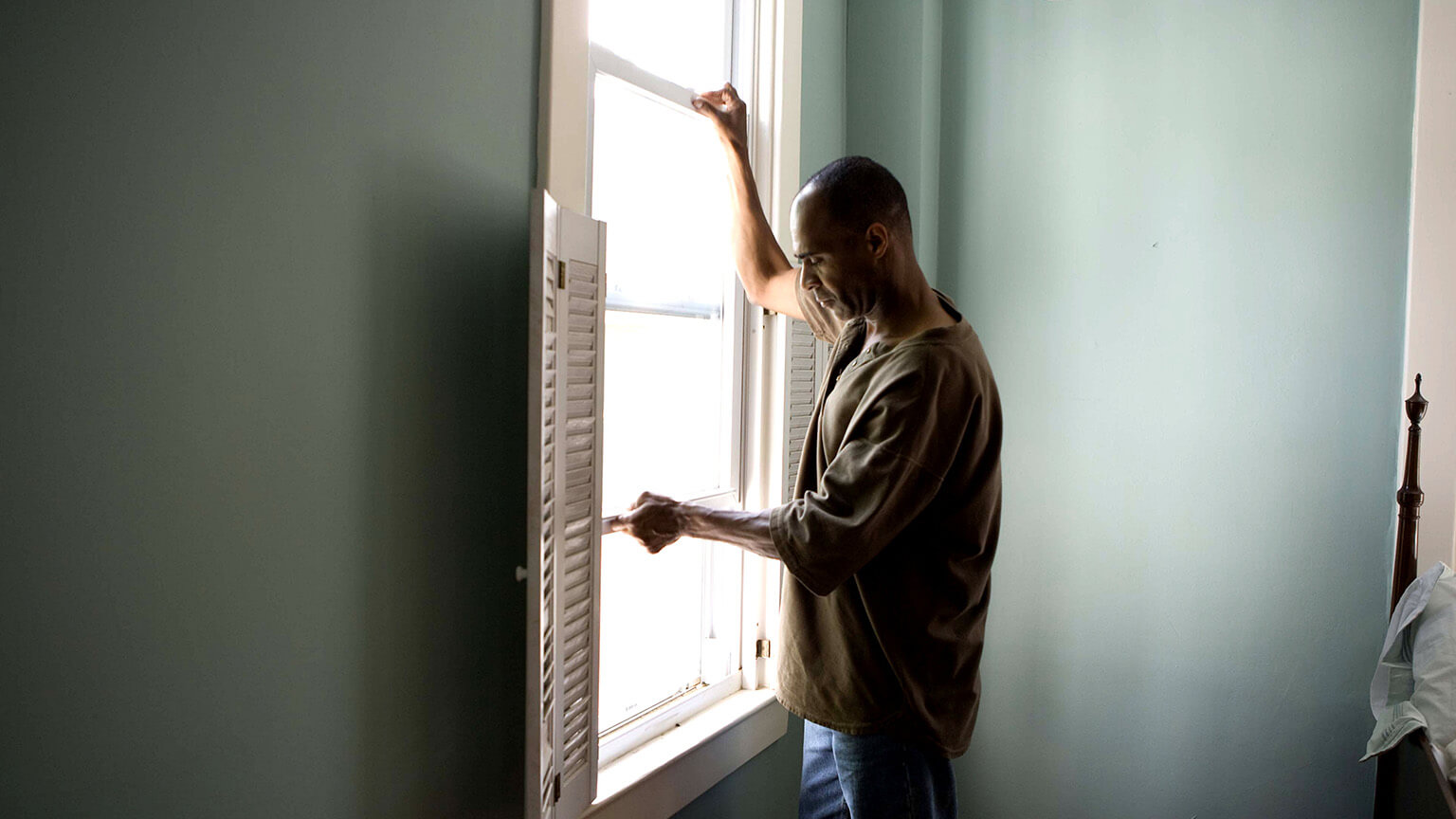Stuck or jamming windows and doors are often signs of foundation settlement or shifting. Learn why this happens, how it affects your home’s structure.






Stuck or Jamming Windows and Doors: Signs of Foundation Problems
Have you noticed that your windows and doors are becoming difficult to open or close smoothly? Are cracks forming in the walls and ceilings of your home, particularly at the junctures of window and door frames? If these issues sound familiar, it’s a prudent time to inspect your home’s foundation for potential signs of settlement!
A solid foundation is the cornerstone of a structurally sound home. Regrettably, many homeowners underestimate the risks associated with foundation damage and only recognize the warning signals when the situation has escalated. The silver lining is that there are proactive measures you can take to reinforce your foundation and ensure the safety and stability of your dwelling.
Instances of window and door jamming, doors that struggle to function correctly, or the emergence of cracks in walls, windows, and door frames could all signal the need for foundation repair. These telltale signs generally suggest that your home’s foundation has been compromised and is no longer properly aligned beneath the structure. Promptly addressing these concerns is crucial, as foundation problems left unchecked can lead to more extensive and costly damage.
Frequent indicators of foundation trouble encompass the separation of wall and window frames, challenges in opening or closing doors, the presence of horizontal or diagonal cracks above windows or door frames, and the appearance of cracks along walls. The degree of severity in foundation issues may range from minor cosmetic irregularities like tiny wall cracks to more pronounced shifts in structural components. Addressing signs of foundation settlement early on is imperative to prevent their escalation into significant structural issues necessitating costly remediation.
While the presence of cracks may not automatically imply foundational issues, seeking an evaluation by a qualified contractor is advisable. You can carry out a preliminary inspection yourself to gauge the situation and take timely action to prevent potential escalation. Undertaking a complimentary assessment of wall or floor cracks now could save you substantial expenses in the future.
Cracks appearing at the corners of windows and door frames constitute another prominent indication of foundation settlement. These cracks can manifest vertically, horizontally, or diagonally. In some instances, they may assume a stair-step pattern along brick walls. Such occurrences suggest that the bricks may have shifted due to settlement in the underlying foundation. It is important to note that not all instances of house shifting result in these cracks; some may be attributed to seasonal fluctuations in moisture.
In dealing with wall cracks, two primary solutions emerge. Depending on the underlying cause, homeowners may need to address more comprehensive repairs, such as resolving foundational issues. Alternatively, the installation of a wall repair solution might be warranted if the wall itself is the source of the problem. This approach can stabilize the wall against further movement and mitigate additional damage.
By recognizing signs of foundation vulnerability and taking proactive steps such as preventive maintenance or prompt repairs, homeowners can sidestep the need for more extensive and expensive remediation related to substantial structural degradation down the line.
Preventive measures prove wiser than reactive responses when it comes to addressing jamming windows and doors. A few simple actions can avert this issue altogether. Start by inspecting all windows and doors for any visible indications of concern, such as cracks, nail pops, or chips in the surrounding walls. If any structural deterioration is detected, address it promptly to forestall future complications.
Moisture can also contribute to the sticking or jamming of windows and doors. Tackling moisture-related problems or water leaks around exterior windows and doors can effectively prevent these issues from arising. Moisture concerns may also originate in the basement or crawl space. The presence of damp air in these areas can rise and be absorbed by the wooden framing of the house, potentially leading to the expansion of the framing.
Thankfully, ’58 Foundations & Waterproofing possesses the expertise to assess and resolve all these issues. This has been our area of specialization since 1958!
With the discussion on potential solutions for addressing current jamming issues related to windows and doors concluded, let’s now explore strategies to safeguard your home from similar complications before they materialize.
Dealing with sticking doors and windows can be frustrating, but there are several effective ways to address the underlying issues.
Sticking doors and windows often result from structural issues such as foundation settling. Here are some professional solutions:
Several products are specifically designed to permanently fix these issues:
By addressing the root causes with these solutions, you can ensure that your doors and windows operate smoothly and prevent future issues.
Ignoring sticking doors and windows can lead to severe issues down the line. Here are the primary risks:
Foundation problems often cause doors and windows to stick. These issues won’t resolve on their own and typically worsen over time. This can result in more complex and costly repairs.
Sticking doors and windows might indicate ongoing foundation settlement. If left unaddressed, this can compromise the entire structure, posing safety hazards and reducing property value.
Underlying water damage to wood framing can be the cause of sticking doors and windows. This moisture can deteriorate other building materials, leading to mold growth and further structural degradation.
Treating sticking doors and windows as minor inconveniences overlooks crucial early warning signs of foundation troubles. Ignoring these can result in more extensive and expensive fixes later on.
Superficial remedies, like quick fixes, such as sanding down doors or adjusting window frames, may temporarily resolve issues with sticking doors and windows, but they rarely offer a lasting solution. These methods often fail to address the root cause, which is typically related to foundational problems.
While adjusting hinges, sanding down the edges, or applying lubricants might provide immediate relief, these actions do not tackle underlying issues. Over time, the doors and windows are likely to stick again, often more severely.
Relying on temporary fixes can seem more affordable initially. However, the costs add up when these issues recur, ultimately leading to higher expenses in the long run. Each short-term solution merely delays the need for more comprehensive, lasting repairs.
To truly fix sticking doors and windows, it's essential to identify and address the fundamental cause—often related to foundational shifts or structural issues. Investing in a thorough inspection and proper repair work ensures that the problem is resolved once and for all, saving both time and money down the line.
Absolutely, humidity can impact your doors and windows, causing them to stick. When the air is humid, materials like wood absorb moisture, leading to swelling. This expansion can result in doors and windows fitting more snugly in their frames, making them harder to open or close.
However, if you experience severe sticking or jamming, humidity might not be the only culprit. Significant issues often point to deeper structural problems in your home. Factors like foundation settling, poor construction, or even pest damage could be at play.
Key Points to Consider:
Understanding the root cause is essential. Sometimes, a powerful dehumidifier like the whole-house HumidiGuard™ dehumidifier can alleviate minor issues, but other times, more extensive repairs may be necessary to address foundational concerns.
A range of approaches exists for addressing foundation repair, providing homeowners with various options. These repair measures are essential for safeguarding and upholding the long-term structural integrity of your home. Common foundation repair solutions encompass piering, stabilization of walls and floors, waterproofing, encapsulation, and the replacement of compromised wooden framing.
Some homeowners may contemplate a do-it-yourself (DIY) approach or opt to enlist the services of a professional contractor for foundation repair. For those deliberating this decision, it is vital to weigh several considerations. DIY initiatives might seem cost-effective and gratifying upon completion. However, without the requisite expertise, knowledge, certifications, and appropriate tools, one might encounter severe setbacks in the event of an issue. Certain repairs necessitate specialized equipment and licenses.
Engaging a professional with the proper licenses and credentials ensures compliance with codes and accurate execution of the repair work from the outset. Ultimately, it’s imperative to thoroughly grasp both sides of this potential investment, while also assessing its financial feasibility. ’58 Foundations & Waterproofing boasts outstanding financing** partners that facilitate highly affordable repair solutions.
In the end, nothing rivals the value of investing in quality building materials and seasoned professionals who possess specialized equipment and comprehensive warranty coverage for their craftsmanship. Effective foundation repairs contribute to enhancing the visual appeal of your home and bolster its overall security.






We respect your privacy. By submitting, you authorize '58 Foundations and Waterproofing to reach you via call, email or text for information about your project needs. We will never share your personal information with third parties for marketing purposes. You can opt out at any time. Message/data rates may apply. Consent is not a condition of purchase. Privacy Policy